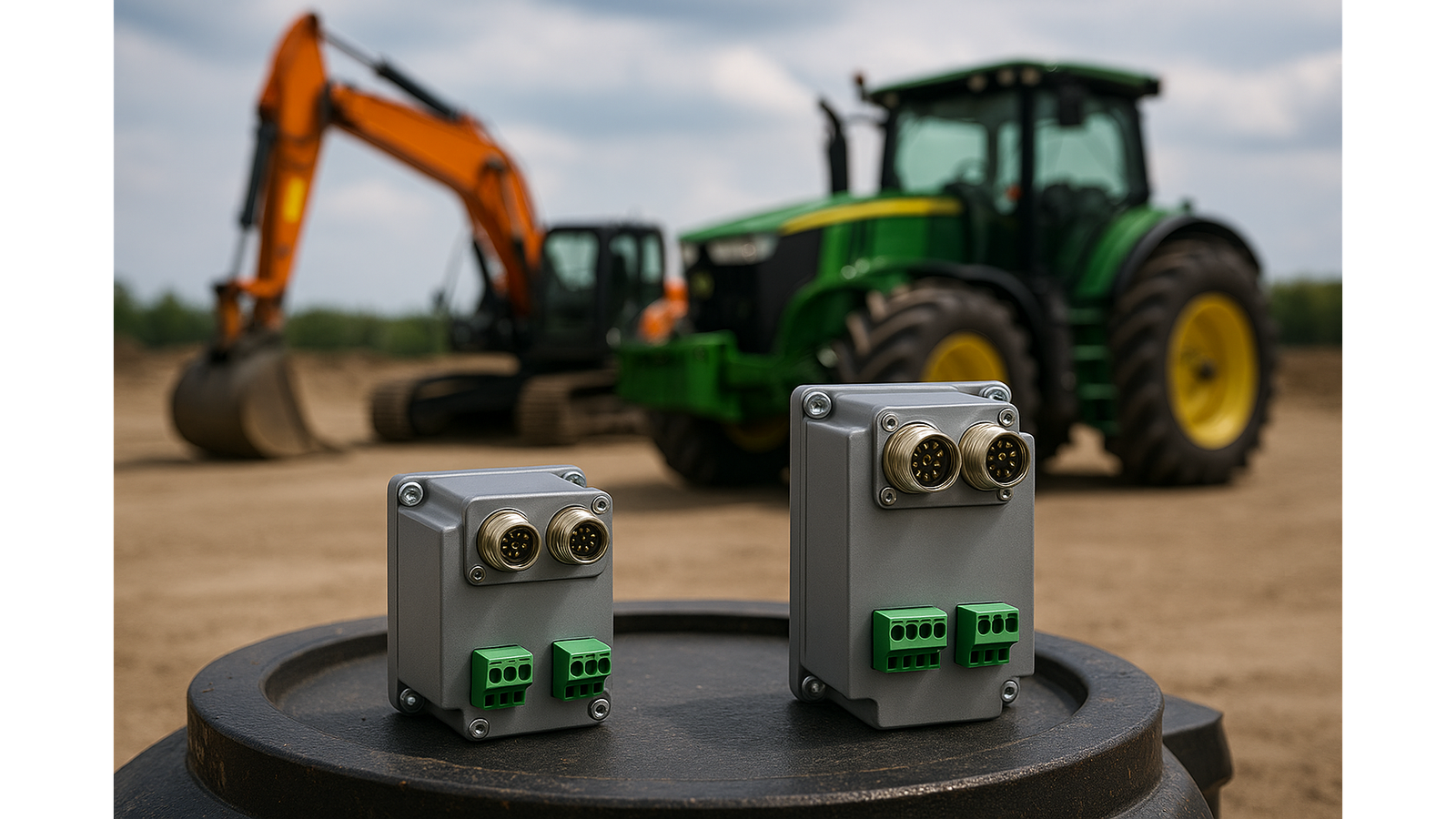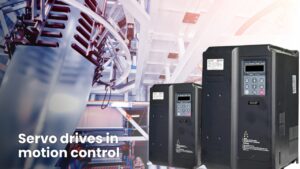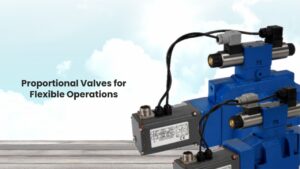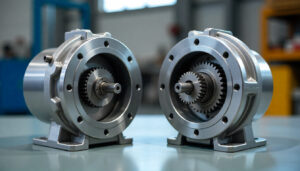Portable equipment has applications in tight areas, with heavy loads, and in a tough environment. To keep pace with these requirements, machines require compact systems with precise motion control and consistent performance. Small servo motors and drives are designed precisely for this reason. In construction machines or agricultural equipment, the units provide effective control of hydraulic and automation systems in tight spaces.
These compact systems allow for precise motion control while saving space, making them perfect for mobile use. Let us understand how compact servo solutions work and what the benefits are.
Why Do Mobile Equipment Need Small Servo Motors and Drives?
With city populations rising, fuel economy rules, and the need for functional multi-use, mobile machinery is now more compact. Due to these changes, engineers must figure out how to operate hydraulics, actuators, and positioning systems in small spaces with maximum efficiency.
Most hydraulic control systems built in the past depended on bulky valves and mechanical linkages. Even though they are reliable, they don’t have the adaptability needed for modern problems. Small servo motors and drives make it possible to have closed-loop control, adjust speed, and make real-time adjustments, all in a tiny package.
What Are Small Servo Motors and Drives?
Small servo motors and drives are integrated motion control systems designed to provide torque and position feedback in compact formats. These devices include:
- Brushless DC motors
- Miniature servo amplifiers
- Integrated controllers
They are tailored for mobile equipment where size, weight, and performance are all critical. Unlike large-scale servos used in factory automation, these systems are built to withstand the rugged, unpredictable conditions of mobile machinery.
How Compact Servo Solutions Work in Hydraulic Control?
Compact servo solutions are especially useful because they are able to easily integrate with electro-hydraulic systems. Switching from manual valves to electronic actuators means machines can:
- Adjust flow and pressure dynamically
- React instantly to changing load conditions
- Improve fuel efficiency by reducing power waste
- Minimize operator intervention through automation
For example, a backhoe loader can use small servo motors and drives to automate boom and bucket movement, adjusting based on soil density and terrain in real time. This improves both productivity and safety.
Advantages of Small Servo Motors and Drives in Mobile Equipment
Here are the advantages of switching to small servo motors and drives in mobile equipment:
1. Space-Saving Design
The size makes a big difference when it comes to mobile equipment. These motors and drives are designed to fit within narrow areas like control cabinets, wheel wells, and slender frames. Their small shape makes it possible to connect them easily with no major changes to the design.
2. High Torque Density
Despite their size, the small servo motors and drives offer impressive torque and speed, enabling heavy-duty tasks without compromising on control accuracy..
3. Reduced Wiring and Components
Featuring built-in controllers and feedback, these systems eliminate the need for additional wiring and independent PLCs. This simplifies the design of the machine and reduces the cost of installation.
4. Energy Efficiency
With mobile equipment, energy efficiency means batteries will last longer or less fuel consumption. Since servo systems only use energy when moving parts, they are more energy efficient than constant-flow hydraulic systems.
5. Greater Safety and More Automation
With electronic motion control, servo solutions eliminate the need for manual input. Because of this, workplaces can guarantee safety and higher levels of machine automation.
Application Examples in Mobile Machinery
Let us understand the common applications of mobile machinery:
Agricultural Equipment
More and more, tractors and harvesters are using servo motors and drives to automate steering, regulate the depth of farming implements, and control seed flow. They raise crop yield and reduce how tired operators become.
Construction Machinery
Servo motors and drives in excavators and mini-loaders automate the movements of the bucket, lift, and swing. Due to this, operations are easier, operators feel less tired, and fuel is used better.
Forestry and Mining Vehicles
In tough outdoor places, servo systems with a rugged and sealed design are used to manage cutting, conveyor, and lifting equipment. Being reliable, they are able to function under all types of tough conditions.
Utility Service Robots
Smaller autonomous vehicles and drones for inspection or maintenance use small servo motors and drives for wheel movement, sensor orientation, and manipulation tasks.
The Future of Servo Technology in Mobile Equipment
Because of electrification, servo-controlled systems are becoming more popular and replacing more hydraulic devices. Those building smart, small-scale machines want their designs to excel during peak performance without creating larger or heavier machines.
Expect new developments in these fields:
- Integrated motor-drive units
- Wireless diagnostics
- Using cloud technology to observe and manage performance
- New technologies are helping make production more efficient
Such innovations will attract more interest in small servo motors and drives for use in mobile equipment design.
Final Thoughts
The trend toward smarter and more compact mobile equipment won’t stop soon. Whatever your industry, construction, agriculture, or industrial automation, using a small motor and a drive will improve control, reliability, and performance.
These solutions are now being used in many fields because they are small, effective, and accurate. They are playing a major role in changing the way mobile machines perform and operate.
Looking to upgrade your mobile equipment with compact motion control? Explore the latest in small servo motors and drives on THM Haude and take a bold step toward smarter automation today.
Frequently Asked Questions
How do compact servo solutions compare to traditional hydraulic systems?
They offer more precision, real-time feedback, and energy efficiency. Unlike manual valves, servo systems adjust dynamically based on load and position.
Are compact servo drives suitable for outdoor or harsh environments?
Yes, many are designed with high IP ratings, sealed housings, and robust materials to withstand dust, water, and temperature extremes.
Can small servo motors and drives be integrated with existing control systems?
Absolutely. Most support communication protocols like CANopen or EtherCAT, allowing seamless integration with PLCs and onboard controllers.
Do compact servo solutions require frequent maintenance?
No. They typically have low maintenance needs compared to mechanical systems, especially when using brushless motors with integrated diagnostics.



